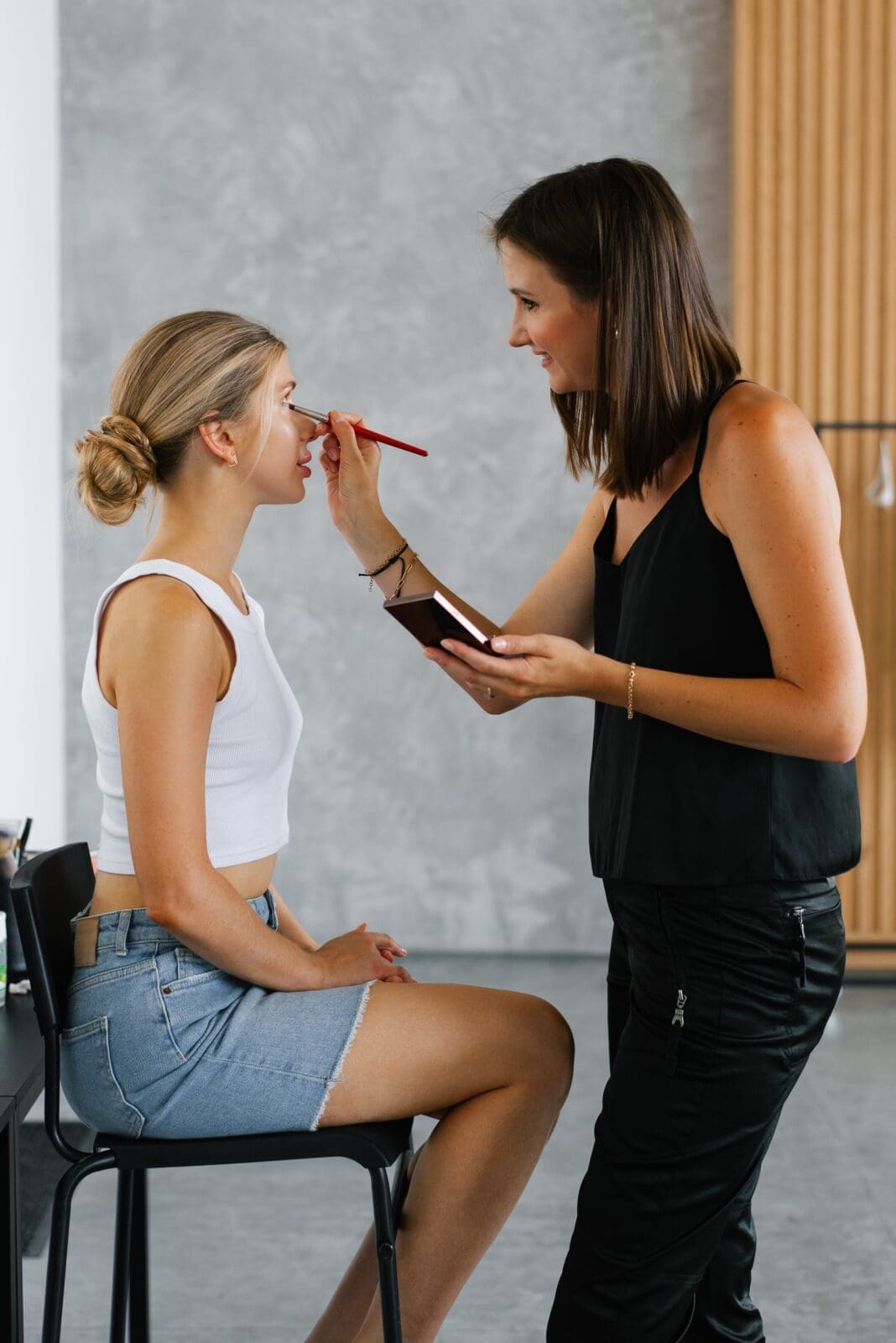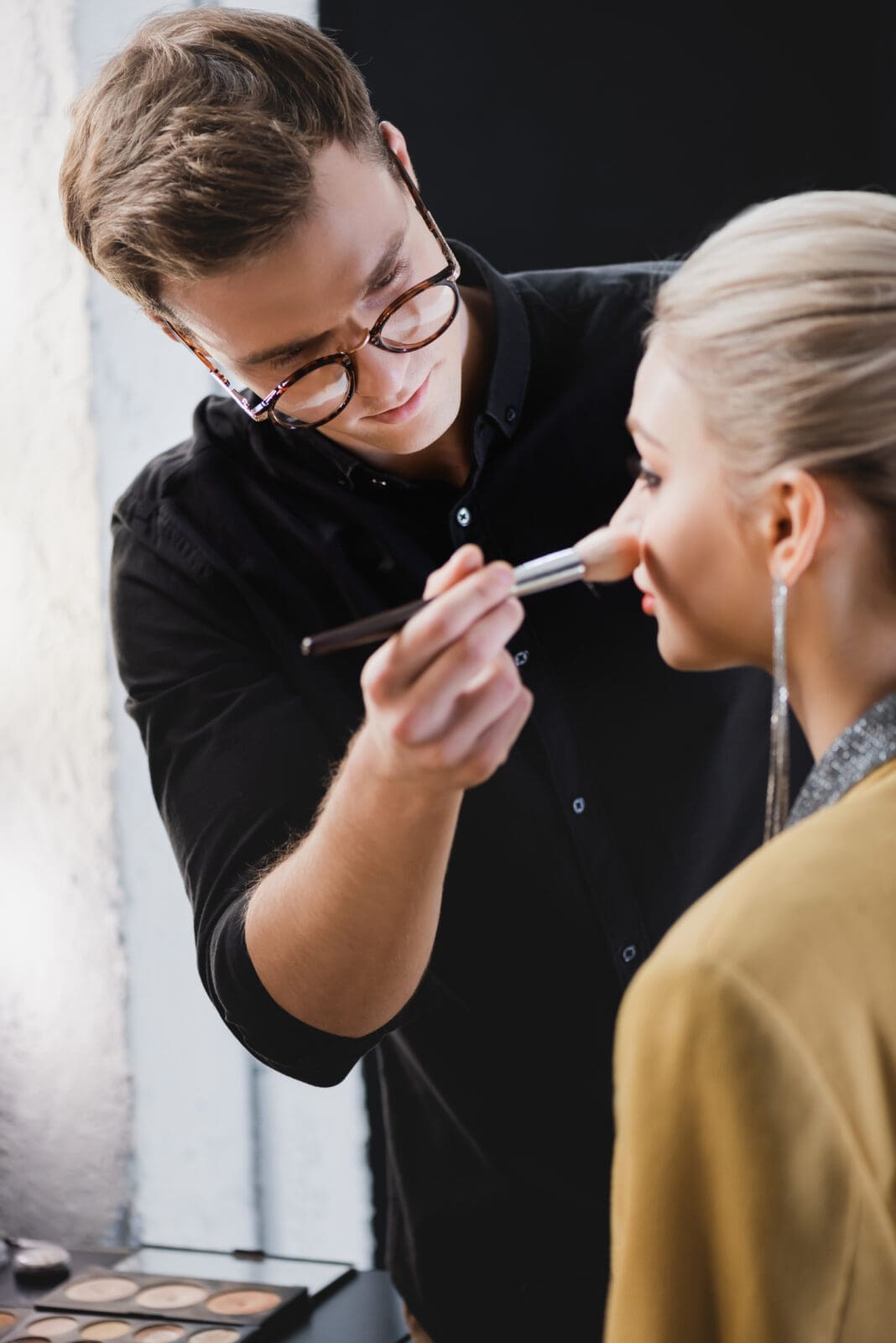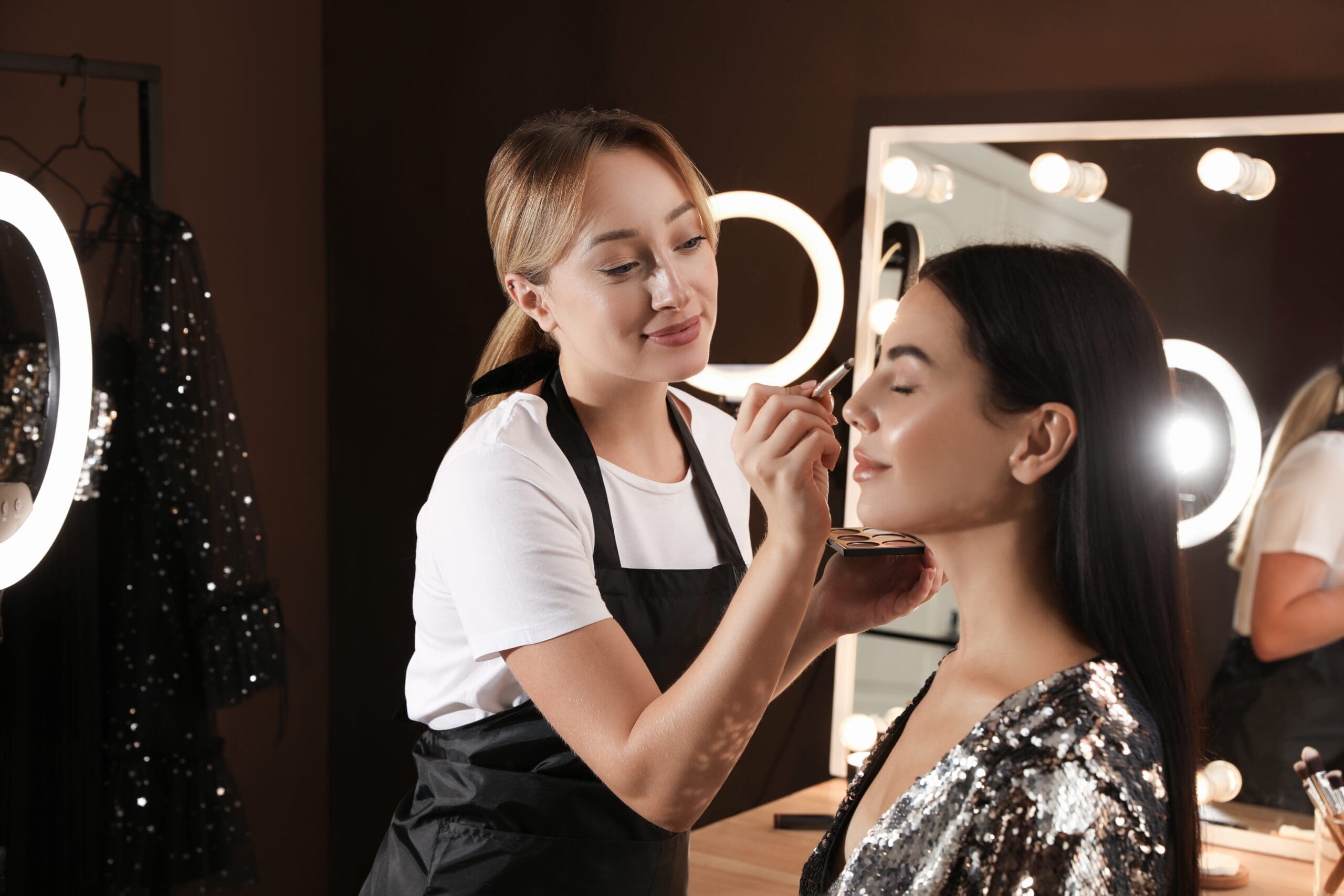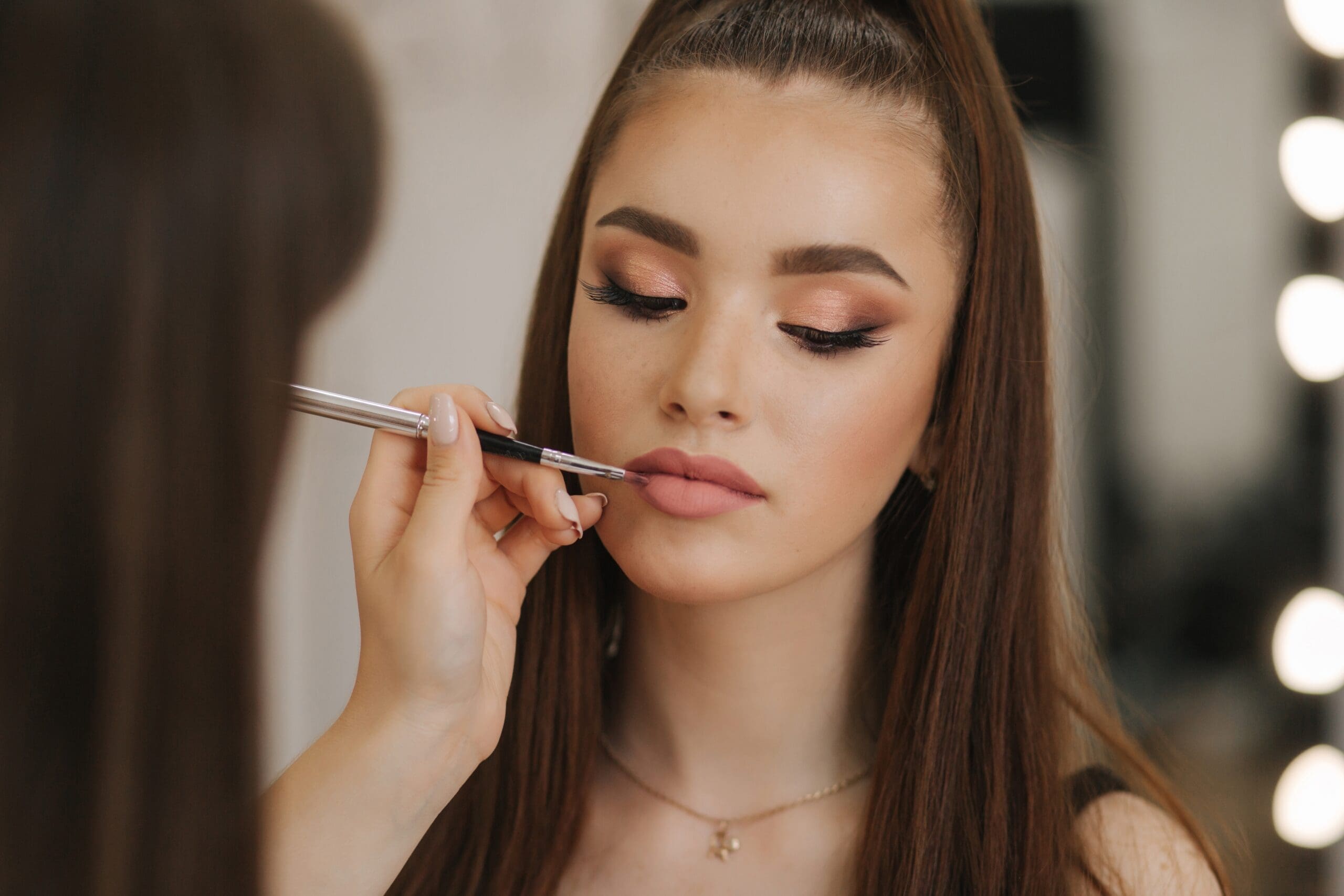Makeup Artist CV Guide
Everything you need to know about getting the perfect Makeup Artist CV
Are you an aspiring makeup artist looking for your first role, or are you already in the position and want a change? Either way, you will need a well-crafted Curriculum Vitae (CV) to impress potential employers and stand out from others applying for the same position.
When an organisation recruits a makeup artist, they will want to see candidates have the necessary experience in makeup artistry, relevant skills and proficiency in various makeup techniques. Therefore, when you write your CV, you want to focus on these areas along with the qualifications, training and attributes that make you an ideal fit for the role. You should also ensure your CV is professional-looking, concise and tailored to the position.
Your CV acts as a first introduction that tells potential employers who you are and how your particular professional background aligns with the requirements of the specific makeup artist position. It is your chance to create a strong initial impression and showcase your creativity and artistic flair.
In this article, we will provide guidance on how to write a makeup artist CV, what to include, some tips and an example to help you get started. It will hopefully increase your chances of securing an interview and, ultimately, the job.
In this Makeup Artist CV guide
What to include in a Makeup Artist CV
What you include in your CV is crucial to your success and getting an interview invite. Firstly, you want to choose an organised, well-structured and easy layout for recruiters to read. You then want to showcase your qualifications, skills, experience and creativity while tailoring the content to the specific makeup artist job.
While individual CVs will vary, the main sections tend to be similar. If you look at some example CVs, you will notice that they will include headings for contact information, professional summary, education, work experience, key skills, achievements and references. Let us look at these sections in further detail and what to include.
Contact information
The first section of your CV is your contact information, which should be at the top of the document. Your details should be clear and accurate so prospective employers can contact you.
Add your full name first in bold in a slightly larger font than the rest of the text, but do not worry about your middle name(s); your first name and surname are sufficient. You can include your professional title under your name, e.g. “Makeup Artist”, and location (town, city or county), but this is optional.
Next, you should use a professional email address that avoids nicknames or slang, e.g. “firstname.lastname@email.com”, and provide a reliable contact number where they can reach you easily. You can also add links to your LinkedIn profile, professional website or portfolio if they are relevant and professional.
Avoid adding your home address, a photo or social media links unless required by the employer. Also, do not include personal information on your CV, such as age, date of birth, marital status, gender, national insurance number or nationality; these are generally irrelevant and could lead to bias, discrimination and privacy issues.
Professional summary
A professional summary is also known as a personal statement, executive summary, professional statement or career profile. It is a brief, impactful section at the top of the CV, underneath your contact information, that highlights your key qualifications, skills, experience, achievements and career goals. It serves as a snapshot of your professional identity, tailored to grab the attention of potential employers.
When recruiters review CVs, the professional summary is one of the first things they will read, so it is crucial it stands out and captures their interest. A well-written summary helps employers understand your value at a glance, encourages them to read the rest of your CV and makes it easier for them to see why you are a strong candidate. Essentially, it is your opportunity to make a powerful first impression.
Your summary should typically be a 3-5 line paragraph – tailored to each makeup artist role you apply for. Here are some pointers on what to include:
- Your professional title – start with a concise title that reflects your career or the role you are targeting, such as “Certified Makeup Artist”. Begin the sentence with a strong action verb to describe your work ethic or style, e.g. “Creative”, “detail-oriented”, “client-focused”, “passionate”, “award-winning”, etc.
- Years of experience – specify how many years of experience you have in your field to demonstrate your professional background.
- Qualifications – highlight your certifications, training and expertise. For example, mention if you are licenced or have specialised training, e.g. bridal makeup, airbrushing, editorial shoots or special effects.
- Key skills – highlight specialised skills like airbrushing, contouring or prosthetic application. Be selective and focus on your strongest and most relevant abilities.
- Achievements – include notable accomplishments showcasing your impact, such as awards, certifications or high-profile clients you have worked with.
- Career goals – express your aspirations in the industry, such as working with high-profile clients, becoming a lead makeup artist for film productions or opening your own studio.
- Passion – showcase your enthusiasm for makeup artistry and how it drives your creativity and dedication. For instance, emphasise your passion for empowering clients by enhancing their confidence through personalised looks.
Here is an example of a professional summary for a makeup artist:
“Creative and detail-oriented makeup artist with 5+ years of experience in bridal and editorial makeup. Proficient in airbrushing and special effects techniques, with a proven track record of enhancing client satisfaction and achieving flawless results. Awarded ‘Makeup Artist of the Year’ in 2023. Passionate about creating unique, client-focused looks that enhance natural beauty and aspiring to collaborate with industry-leading professionals”.
Education
You can choose which section comes after your professional summary – your education or work experience. If you already have experience as a makeup artist, the latter may be better first. However, if you are starting your career in makeup artistry and have more qualifications and training rather than work experience, your education can come first.
In the education section, you should tell the reader about your academic background and qualifications relevant to the makeup artist position and list them in reverse chronological order (most recent first). Here are some examples of what to include:
- Qualifications and certifications – add any specific cosmetic courses, certificates, diplomas or degrees related to makeup, beauty or aesthetics, for example, VTCT Level 3 Diploma in Makeup Artistry. Mention if your course allowed you to specialise, e.g. in special effects or bridal makeup.
- Training and workshops – include any masterclasses, short courses on specific techniques or even online training you have attended that holds industry recognition. For example, Masterclass in Airbrush Makeup, Bobbi Brown Academy (2024).
- Relevant school education – if you are starting, you can include your secondary school education, e.g. GCSE’s, especially if you took any related courses.
- Institution, dates and grades – for each qualification, provide details of the following:
- The name of the university, college, school, academy or training provider.
- The years you started and completed (or expect to complete) your studies.
- Your final grade, honours, awards or notable accomplishments (where relevant).
This section is crucial as it showcases your qualifications, validates your expertise and differentiates you from other candidates. Prospective employers will also use this section to assess your suitability for the role.
Work experience/employment history
The next section we will focus on is work experience, also known as your employment history. It is where you highlight your professional background and provide details of your previous jobs, roles and achievements (in reverse chronological order). If you have limited paid work experience, you can add any volunteering roles and practical experience gained during apprenticeships, internships or other placements.
The work experience section is one of the most important, as it tells employers about your practical experience, shows how you have applied your skills in real-world scenarios and helps them assess your potential to succeed in the role. They will use this section to determine if your past roles align with the job requirements they are seeking to fill.
When adding your work experience, focus on your previous roles directly related to makeup artistry, beauty or the creative arts and concentrate on your duties relevant to the job you are applying for. Here are some pointers on what to include:
- Job titles – clearly state your previous roles, e.g. “Makeup Artist”.
- Company names – list the organisations you have worked for. If you have worked for ourself, add self-employed.
- Location – add where you worked, i.e. town, city or county.
- Dates of employment – include start and end dates for each position (month and year).
- Responsibilities
- Summarise your primary duties and tasks in each position that demonstrate your technical skills, e.g. applying makeup for different occasions, selecting appropriate products based on skin type, collaborating with photographers, etc.
- Add responsibilities showing versatility, like working on weddings, fashion shoots, or theatrical productions.
- Add your responsibilities in bullet point form and begin with a strong action verb, like “applied”, “consulted”, “performed”, “enhanced”, “achieved”, etc.
- Achievements – focus on accomplishments like client satisfaction, positive reviews or contributions to high-profile projects. Quantify results when possible (e.g.”Styled makeup for 50+ clients during a bridal season”).
- Relevant skills – mention specific skills pertinent to the job you are applying for and use industry-specific keywords such as “airbrush techniques”, “bridal makeup”, or “special effects”.
Key skills and achievements
The next section, your key skills and achievements, can be included in your CV under a separate heading, or you can weave them into your work experience. It depends on your background and preference.
Key skills are the abilities and expertise that make you effective in a makeup artist role. They demonstrate your suitability for the job, help you stand out in the recruitment process and show how well you might perform in specific situations. Tailoring your key skills to match the job description is especially important when applying for makeup artist positions, as many organisations use Applicant Tracking Systems (ATS) to screen CVs for keywords.
There are two main types of skills, hard and soft:
- Hard (technical) skills – are specific, measurable abilities gained through training or experience. They are often directly related to a job and can be listed on a CV or tested during an interview. Some examples of hard skills for a makeup artist include makeup application techniques, special effects makeup, skincare knowledge, product expertise, sanitation, photography makeup, colour theory, etc.
- Soft (interpersonal) skills – are behavioural traits that help you interact effectively with clients and colleagues. They are trickier to measure but equally vital. Some examples of soft skills for a makeup artist include creativity, customer service, communication, patience, attention to detail, time management, adaptability, collaboration, etc.
You should include both hard and soft skills in your CV. An example of how you can add a hard skill would be “Proficient in airbrush makeup for bridal and editorial shoots”. You can integrate your soft skills subtly by connecting them to real examples in your work experience. For example, “Demonstrated strong adaptability by handling last-minute changes during high-pressure fashion shows”.
You can also pair your achievements with your key skills, demonstrating how you have effectively applied your skills to deliver tangible results. We will look at how to focus on your achievements later.
Other information
The main sections seen in most CVs are contact information, professional summary, education, work experience, key skills, achievements and references. However, these headings are not concrete, and you can further enrich your makeup artist CV by adding sections that illustrate your creativity, continuous learning and professional involvement.
Here are some examples of additional sections and information you may want to consider adding:
- Portfolio/Lookbook – as a makeup artist’s work is highly visual, you may want potential employers to see real examples of your artistry. You can add a dedicated portfolio section, including a link to your online portfolio, professional social media pages or personal website.
- Certifications and additional training – you may want to keep your education section for any formal training and have a separate one for any specialised courses, workshops, seminars or masterclasses you have attended, e.g. special effects makeup or airbrush techniques. It can showcase your commitment to professional development.
- Professional affiliations and memberships – if you are a member of industry associations or professional organisations, e.g. in a professional makeup group or beauty council, you may want to add a section demonstrating your commitment to the field.
- Projects and collaborations – you could include a section focusing on key projects or collaborations, e.g. high-profile campaigns, unique editorial shoots or creative collaborations. Name the event, client, or publication and briefly describe your role and the outcome or any recognition received.
- Volunteer work – you can add any relevant volunteering experience, e.g. offering makeup services for charity events, community theatre productions or local fashion shows. It can reflect your passion and commitment beyond paid work.
- Personal interests and hobbies – only include this section if relevant to the makeup artist position. For example, if you are passionate about beauty trends, photography or fashion design. If you have limited experience, you could also add details of applying makeup and using various techniques on family and friends.
- Languages and technical proficiency – listing language skills may be advantageous if you work in diverse, multicultural settings or on international projects. Additionally, proficiency with relevant software (e.g. photo editing tools) can support your portfolio presentation.
If you have been self-employed, you could also include details on client testimonials and any positive feedback received.
If you add additional sections to your CV, be mindful not to add too many, as it makes the document look cluttered and more difficult to read. You want your CV to be as engaging and informative as possible, so only include details relevant to the specific makeup artist job.
References
The final section of your CV is usually the references section. It is where you provide details of 2-3 individuals (referees) who can vouch for your skills, experience and character to potential employers. They are usually previous employers, managers, supervisors, colleagues, mentors or clients you have worked with.
Having strong references is crucial, as employers may contact referees to verify the credentials listed on your CV. It also reassures them about hiring you when they receive positive feedback from trusted individuals. Recruitment is expensive, so they want to ensure they have the right person for the job.
Before completing your reference section, review the job description to see if they have asked for specific referee details at this stage. If they have not and you are struggling for space on your CV, you can add a simple statement, “References available upon request”.
If you do provide details of your referees under the reference section, you should include the following:
- Name – provide the full name of your referee.
- Position/title – mention their role (e.g. “Salon Manager” or “Fashion Photographer”).
- Company/organisation – include the name of their workplace, if applicable.
- Contact details – provide a phone number and/or email address. Ensure their contact information is up-to-date.
- Relationship – briefly describe your connection to the referee, e.g. “Former employer”, “Client”, “Supervisor during a freelance project”, etc.).
Ensure your references have agreed to be contacted and prepared to provide positive feedback. Always ask permission first before adding them to your CV. You could also give them details of the job you are applying for so they can tailor their reference accordingly.
Tips for writing a Makeup Artist CV
Crafting an exceptional CV is more than just listing your work history; it is about presenting your unique strengths and experience in a way that captures attention and tells your professional story. While we have looked at some of the main sections and suggested content, here are some general tips to help you make a strong, lasting impression on employers:
- Customise your CV to each makeup artist position – align your key qualifications, experience and skills with the job description. Adapt your language and naturally incorporate keywords that resonate with potential employers.
- Keep it concise yet comprehensive – your CV should be between one and two pages; any more will likely make employers less inclined to read it. Ensure it is clear, concise, and only includes relevant information. Remember, you are introducing yourself and your professional background, not giving your life history.
- Be honest – represent your qualifications, experience and skills truthfully. Authenticity resonates with recruiters and builds trust.
- Balance professionalism with personality – while it is important to maintain a professional tone, do not be afraid to let a bit of your personality shine through, especially if it is relevant to the role.
- Use action-orientated language – use strong action verbs like achieved, developed, led, designed or initiated to describe your achievements. Avoid overused clichés, such as “hardworking” or “team player”, as these are overused and lack specificity.
- Use professional and consistent formatting – you can help your CV stand out by:
- Using a clean, professional layout with clear sections, headings and bullet points. Avoid long paragraphs.
- Using professional, simple and clear language, avoiding slang or overly casual expressions.
- Using the same tense throughout your CV. Typically, past tense is used for previous jobs, and present tense is used for your current role.
- Avoiding excessive use of fancy designs, colours and fonts.
- Sticking to a simple font like Arial, Calibri or Times New Roman and consistent size, e.g. 10-12 points.
- Ensuring your CV has adequate spacing to make it more visually appealing.
- Avoiding using personal photos, as it can distract and lead to bias.
- Using a digital format where possible. Save and send your CV as a PDF to ensure the formatting stays intact when viewed on different devices.
- Proofread and seek feedback – spelling and grammar mistakes can undermine your professionalism. Take the time to proofread your CV or ask a trusted friend or mentor to review it. You can also use an online spelling and grammar checker or the read-aloud function to catch any missed errors.

Focus on achievements
Achievements on a CV are specific accomplishments that showcase how you have added value in your previous roles or experiences. They go beyond listing responsibilities, i.e. what you were required to do, to highlight the impact and results of your work. There are many types of achievements, such as career milestones, creative contributions, professional growth and addressing challenges effectively.
When you effectively focus on your achievements, you help employers envision your potential to deliver results for their company and make your CV more compelling by bringing depth to your work experience. It also distinguishes you from other candidates by proving your capabilities and contributions.
There are several sections where you can focus on your achievements in your CV. You can add them to your work experience, combine them with your key skills or have a separate section, “Key Achievements” or “Professional Accomplishments”. Here are some pointers on focussing on them effectively:
- Tailor your achievements – focus only on achievements that directly relate to the makeup artistry role and beauty industry and showcase your technical expertise, client impact and creative collaborations in line with the job description. If the posting details high-profile projects or customer rapport, align your achievements accordingly.
- Prioritise impact over duties – highlight the impact of your work instead of just listing your previous responsibilities. For example, rather than simply stating, “Performed bridal makeup,” you could write, “Delivered bespoke bridal makeup looks for 50+ weddings during peak season, resulting in a 90% repeat client rate”.
- Provide context – briefly describe the challenge you faced, the specific action you took and the tangible result. For example, “Faced with short pre-event preparation times, innovated an efficient, yet flawless, makeup application process, resulting in a 25% reduction in on-set touch-ups”.
- Quantify your success – where possible, use numbers, percentages and other metrics to create a tangible impression of your accomplishments. For example, “Styled makeup for over 100 clients per year, with a client satisfaction rate of 95%”.
- Use action-oriented language – start each bullet point with dynamic action verbs that convey initiative and achievement. Some examples include:
- Created unique looks that pushed creative boundaries.
- Managed last-minute makeup challenges during live events.
- Innovated specialised techniques for editorials that led to increased media exposure.
- Reflect on your growth – as your career progresses, continuously update your CV with new achievements to demonstrate development and your commitment to learning and improving.
Here are some examples of achievements to help you get started on your own:
- Client satisfaction and retention – achieved a 95% client satisfaction rate through personalised consultations and flawless makeup applications.
- Creativity – designed unique prosthetic makeup for a short film that won an award for Best Visual Effects at a local film festival.
- Collaboration – collaborated with photographers and stylists on 30+ editorial shoots, contributing to cohesive and visually stunning campaigns.
- Sales – increased retail sales by 25% by recommending tailored beauty products to clients during consultations.
- Professional growth – progressed from freelance makeup gigs to securing a permanent role as a Senior Makeup Artist at a leading salon.
Describe your experience
Effectively describing your experience is crucial because it helps you stand out and demonstrate your skills, achievements and suitability for the job.
Employers often sift through numerous applications, so clear and compelling descriptions of your experience can catch their attention and highlight why you are the ideal candidate for the role.
Experience on a CV refers to where you showcase your past work, internships, volunteer roles or other activities relevant to the makeup artist position. You will typically cover this in the work experience section and will also add brief descriptions in your professional summary.
- Professional summary – here, you will briefly describe your key experiences, skills and accomplishments to provide a snapshot of your credentials and competencies. You should mention your current or most relevant role, the number of years of experience and your field. Remember to tailor the descriptions in your summary to show how your expertise can bring value to the employer.
- Work experience – in this section, you will describe your professional background by starting with your job title, the company name and the dates you worked there. You should concisely summarise your responsibilities, focusing on key tasks, skills and achievements relevant to the role you are applying for. Use strong action verbs and tailor the details to align with the job requirements. Your descriptions should demonstrate the value you bring as a candidate.
If you are in a position where you have recently qualified and/or have limited direct experience in paid makeup artist roles, do not worry. You can still effectively describe your experience by concentrating on relevant training, transferable skills, related experiences and strong achievements. Here are some examples of what you can add to your experience descriptions:
- Emphasise your education and training – list any makeup artistry courses, certifications or workshops you have attended to showcase your technical training. You could also include online courses, seminars and conferences.
- Include volunteer and freelance work – mention projects like photoshoots, charity events or makeup sessions for friends and family that allowed you to practice your skills.
- Highlight transferable skills – focus on attributes such as attention to detail, creativity, customer service and effective communication, which are essential in makeup artistry.
- Showcase collaborations and internships – include any assisting roles or internships with professional makeup artists, photographers, stylists or beauty brands, even if they were short-term and in a non-formal setting.
- Personal projects and portfolio work – highlight self-initiated projects, such as sharing curated makeup looks on social media or a personal portfolio website. You could also include online tutorials, research on trends or engagement with beauty communities that keep your skills current and relevant.
- Tailor your professional summary – use your professional summary to demonstrate your eagerness for the role and industry. An example would be ” Passionate and detail-oriented aspiring makeup artist with formal training in beauty techniques and a strong creative flair. Skilled in experimenting with diverse makeup styles and staying updated on the latest industry trends. Built a personal portfolio through self-initiated projects and social media engagement. Eager to bring enthusiasm and a strong work ethic to a professional role in makeup artistry”.
By framing your professional journey as a proactive quest for growth and excellence, you can effectively communicate your potential and passion for the field, even if you are still building your formal experience.

Tailor your CV to the Makeup Artist position
We have mentioned tailoring your CV a few times already, and it essentially means customising it to align with the specific makeup artist job you are applying for. Instead of using a generic CV for all applications, you adjust its content to highlight the most relevant training, skills, experiences and achievements for that particular role.
Tailoring your CV to each makeup artist role is crucial, as it improves your chances of standing out from candidates with generic applications, helps it pass screening systems and shows genuine interest in the role. It makes your application more compelling and focused, demonstrating to employers that you have taken the time to understand their needs and are the best fit for their organisation.
To tailor a makeup artist’s CV, focus on aligning it with the specific job or opportunity you are applying for. Here are some pointers on how to achieve this:
- Analyse the job description – carefully read the job posting and identify the qualifications, key skills and qualities the employer wants. Compare their requirements with your credentials and align your most relevant with the specific position.
- Do some research – employers look favourably at candidates who know more about the organisation they are applying to. Therefore, research the employer and company. Look at their website and social media feed to see if you can align the language in your CV with their values, goals, ethos and mission statement.
- Use industry keywords – pick out some keywords they use in the job posting and include those most relevant, e.g. “contouring”, “special effects makeup”, or “colour theory”. It ensures your CV resonates with recruiters and increases the chances of passing applicant tracking systems (ATS).
- Adapt various sections in your CV – you may need to go through your CV and add or remove sections and make adjustments. Here are some ways to customise the various sections in your CV:
- Write a targeted professional summary highlighting your passion, skills and suitability for the specific role. Mention the job title and the company name to show you have tailored your CV to this position or company.
- Emphasise qualifications, certifications, courses or workshops mentioned in the job posting. For example, if they want someone Diploma-qualified, highlight this in your CV if relevant.
- Tailor your work experience by focusing on roles, responsibilities, and achievements directly relevant to the job. If you have experience in similar roles, emphasise transferable skills. Remove or minimise unrelated roles.
- Focus on skills mentioned in the job posting, including hard and soft skills. For example, if they mention proficiency in specific makeup application techniques, focus on these areas.
- Do not forget your cover letter – ensure you tailor your cover letter if you need to send one with your CV. Address it to the individual mentioned in the posting and reference the company. Use examples from your CV to support your claims and detail what makes you the best fit.
Taking the time to tailor your CV and ensuring it is professional-looking, relevant and engaging can help you get that all-important interview invite and hopefully land you the job.
Good luck!



